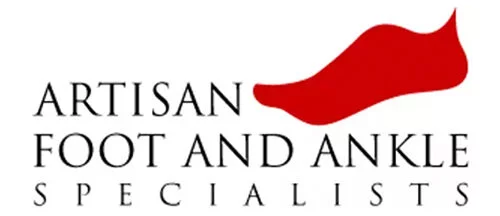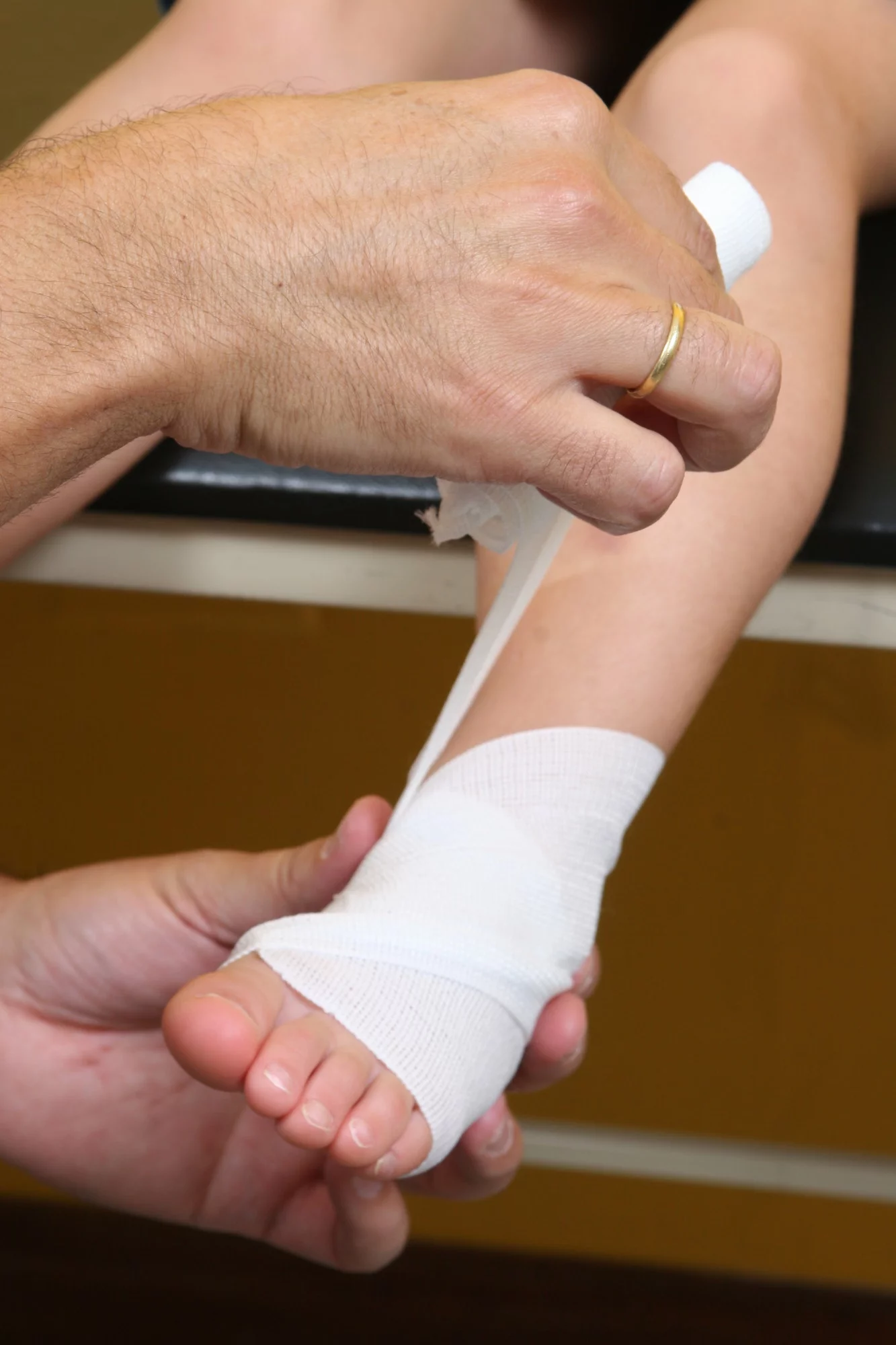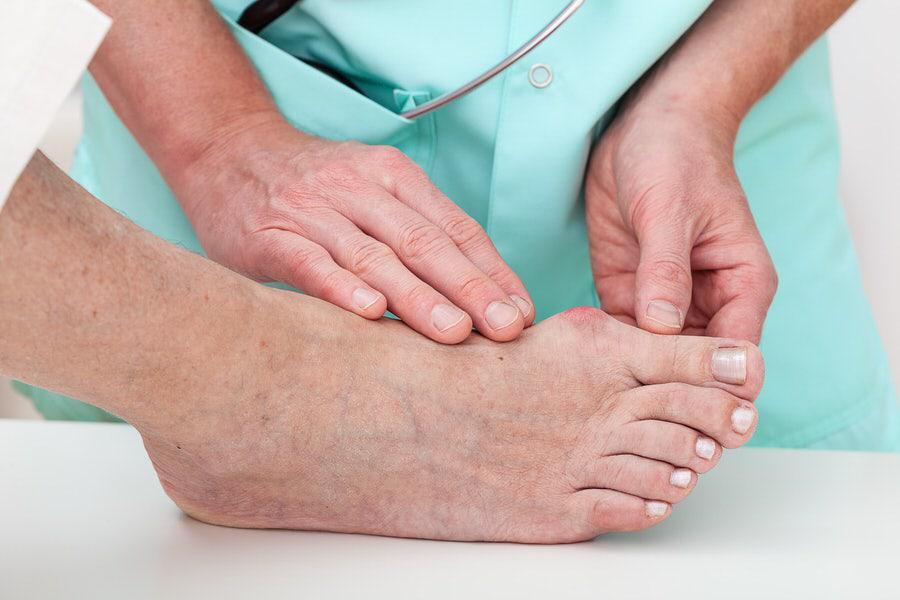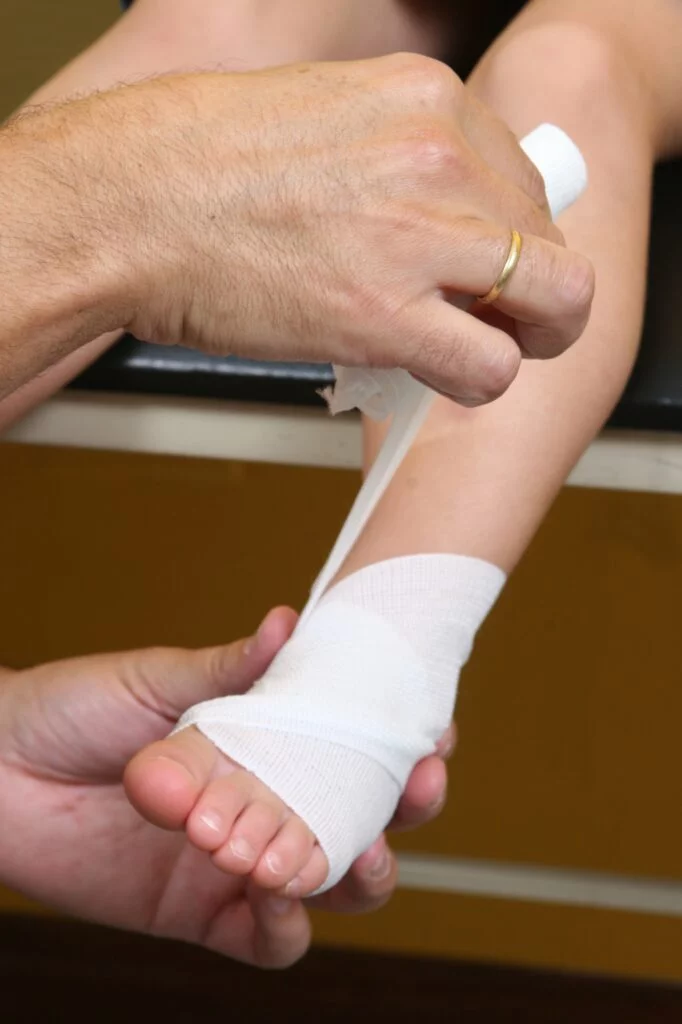Do you have a painful, bony growth on the outer edge of one or both big toes? This condition, known as a bunion, can interfere with your mobility and make even simple tasks like taking a walk or going on a hike difficult. Our podiatrists specialize in the treatment of bunions using conservative means whenever possible. We have locations throughout the Northern California. Book your appointment today by calling the office nearest you or clicking the online booking tool.
What is a Bunion?
A bunion is a noticeable, hard bump that develops at the base of your big toe. If the bones near the front of your foot become misaligned, your big toe pulls forward and places pressure on your smaller toes.
Ultimately, this forces the joint at the base of your toe to stick out. It’s also possible to develop a bunionette or tailor’s bunion on your little toe.
The most common cause of bunions is wearing tight, uncomfortable shoes or shoes without an adequate toe box. However, other contributing factors include foot deformities and chronic conditions such as arthritis.
What are the Symptoms of a Bunion?
Bunions vary in size and severity. However, common telltale signs include:
- A bony growth on the base of your big toe
- Swelling or redness around your big toe joint
- Persistent pain that comes and goes
- Corns or calluses on your big toe
As your bunion gets worse, you also might find it difficult to bend or straighten your big toe. You might also develop hammertoe.
When Should I See a Doctor for a Bunion?
Even if your bunion isn’t causing you pain or interfering with your mobility, it’s important to schedule a consultation.
During your appointment, your podiatrist can educate you about preventive measures to keep the problem from getting worse. You should also schedule an appointment if your bunion:
- Is painful
- Prevents movement in your toe or foot
- Prevents you from wearing your favorite shoes
It’s also important to seek professional help if your bunion continues to grow in size, or it becomes red or swollen.
Who is at Risk of Developing Bunions?
Bunions affect people of all ages. However, you’re at a higher risk of developing a bunion if you:
- Wear high heels
- Have flatfeet or fallen arches
- Wear tight or ill-fitting shoes
- Have a family history of bunions
- Have an improper gait
- Have rheumatoid arthritis
You’re also more likely to develop a bunion if you have other podiatric problems such as hammertoe, bursitis, or metatarsalgia.
How are Bunions Treated?
Whenever possible, we use conservative measures of care to treat bunions. Depending on your symptoms, you may need to wear more comfortable, padded shoes, custom shoe inserts, or take over-the-counter pain medications to relieve swelling and pain.
If these methods of care don’t provide adequate relief, surgery may be necessary. There are a variety of surgical procedures designed to address bunions.
Following a physical exam of your foot and a review of your medical history, your doctor develops a plan that aligns with your unique needs.
If a bunion is affecting your quality of life and mobility, make an appointment today. Call the office nearest you or click the online booking tool.

A Rapid Return to Real Life
Bunions can be painful and unsightly. One of the main reasons bunion-sufferers avoid surgery is concerns about how long they will be off their feet unable to take care of themselves or their responsibilities.
This is why CrossRoads Extremity Systems developed the miniBunion™ procedure; a cutting edge minimally-invasive technique to repair bunions. Unlike traditional procedures, the miniBunion™ technique requires a tiny incision 2 to 4-times smaller than a standard technique and requires much less trauma to the soft-tissues surrounding the toes. This minimally-invasive technique spares the blood supply to the bones and allows a smaller scar and faster rehabilitation.

The miniBunion™ scar is not only small, it is in a location that is difficult for anyone to see. Unlike most bunion procedures where the incision is on the top of the foot, the miniBunion™ incision is on the inner side of the foot. This location results in a scar that is basically invisible during day-to-day activities.
Many Patients Walk the Same Day as Surgery
Although it depends on surgeon recommendations and patient factors, many patients can walk immediately after surgery in a special postoperative shoe.
The pain from recovery depends greatly on the pain tolerance of the patient. However, surgeons who utilize the miniBunion™ technique report their patients are in less pain than would be expected from traditional bunion surgery.
Covered by Insurance!
Bunion correction is a very commonly insured surgical procedure. Although miniBunion™ is a new minimally-invasive procedure, it is classified as a bunion correction procedure and is therefore covered by most insurance policies.
The miniBunion™ System
The miniBunion™ system is a minimally-invasive surgical technique for implanting a micro-titanium implant. This patent-pending implant has been designed to provide immediate stability to a bunion patient’s foot to allow a fast return to activity.
Step1:

A small incision is made on the side of the foot.
Step 2:

The toe is realigned and the miniBunion™ micro-implant is inserted.
Step 3:

The incision is closed with stitches.
Step 4:

The stitches are removed and the small scar fades over time.
What happens in Surgery?
Although the miniBunion™ technique is minimally-invasive, it still involves the precautions and elements of a standard surgical procedure. Depending on surgeon recommendations, the surgery can be performed with the patient completely asleep or the patient can be awake with anesthetic applied to the nerves in their leg to prevent feeling any pain.
In the surgery, the patient is covered with a sterile cover, but their leg is exposed and thoroughly washed with a sterile surgical washing solution.
A small incision, generally 15mm to 20mm, is made on the side of the foot. The bone is realigned with surgical instruments and the miniBunion™ implant is attached to the bone to hold the bone in proper alignment. The incision is then closed with suture.
Will this Surgery Work for Every Bunion?
More severe bunions may require a more aggressive procedure to straighten the toe. Your surgeon can help you decide which surgical option will be best for you.
Learn More About Bunions
Do I Have a Tailor’s Bunion? And If So, What Can I Do About It?



